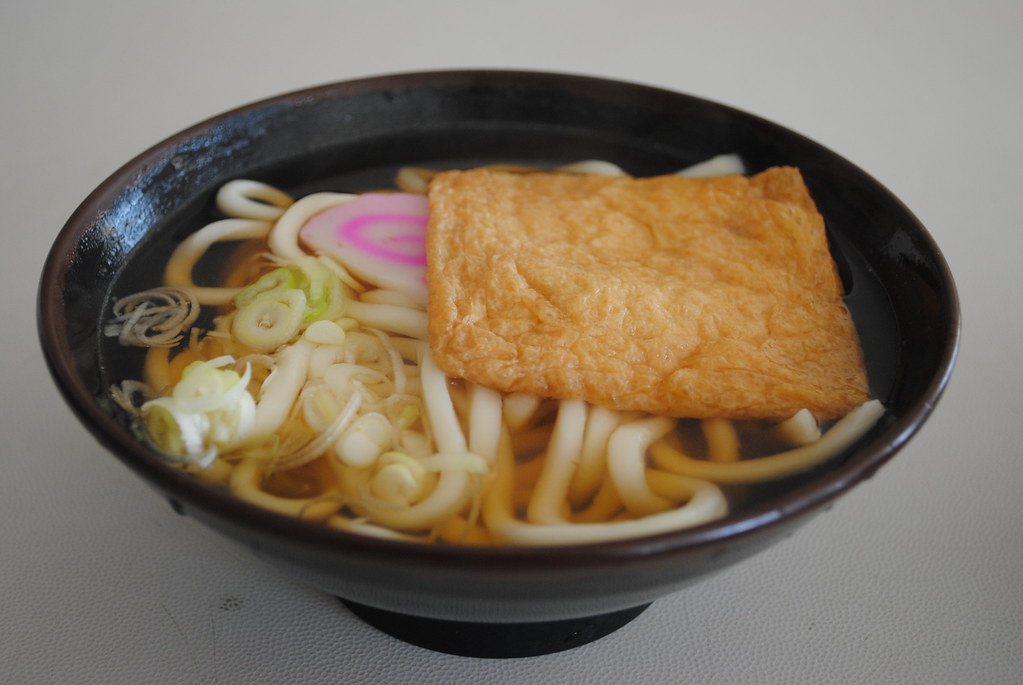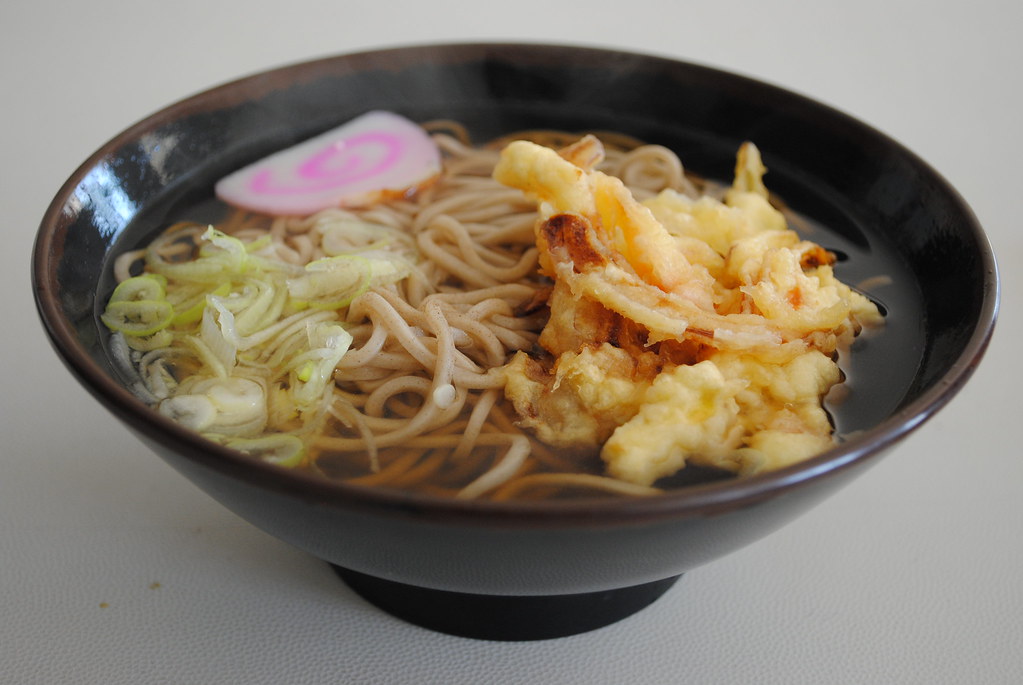Today's Japaneats are きつねうどん and たぬきそば. Udon are thick white noodles made of wheat flour, usually served in soup. Soba are thinner, darker coloured buckwheat noodles which are possibly a bit closer to what we're used to at home. "Kitsune" means "fox" and the "tanuki" is a Japanese animal like a raccoon or a badger (officially translated as a "raccoon dog"). Thankfully neither of them are actually in their dish!
きつねうどん gets its name from foxes, who frequently appear in Japanese folklore (they are usually white in the stories, like the udon). They are very clever animals said to have magical powers including being able to disguise themselves as humans. The more powerful a fox is, the more tails it has (up to nine). They often appear in Japanese popular culture, such as the アニメ (anime) Pokemon and Naruto as the 九尾 (Kyuubi - Nine-tails).
Speaking of Naruto, have a look at the pictures of the noodles and find the fishcake with a pink swirl on it - this is called a なると蒲鉾 (なるとかまぼこ - naruto kamaboko - naruto fishcake). This got its name from the famous Naruto Whirlpools near Awaji Island (hence the spiral). It may also be where Naruto got his name - he always eats them with his ラーメン (ramen), and he has a mark on his stomach that looks very like a whirlpool!
Basically, きつねうどん is udon in a salty broth with a big "slab" of fried tofu called 油揚げ (aburaage) and shredded spring onions. According to the legend, foxes love 油揚げ and I don't blame them. It's slightly sweet and has a lovely chewy texture. It soaks up the soup like a sponge which balances out the flavours nicely but you need to be careful not to splash yourself.
たぬきそば, on the other hand, is named after a different figure in folklore - the raccoon dog. Similarly, they are able to shapeshift into human form, but also into statues and everyday objects. You can find たぬき statues outside a lot of noodle shops, with big smiles and pot bellies.
Like きつね, they are found in a lot of pop culture and games - you could turn into a たぬき in Super Mario Brothers 3 and transform into a statue, for example.
If you've played Animal Crossing, the character Tom Nook is also a たぬき (and his name is a bit of a hint).
たぬきそば is similar to きつねうどん in terms of its soup but has a piece of 天ぷら (tempura) batter called かき揚げ (kakiage) which has finely chopped vegetables and prawns inside. It's crunchy and delicious. It's a good idea to eat it quickly though - it can get a bit soggy in the soup if you leave it for too long.
I'm also told that the soup is slightly different depending on where in Japan you are. In the 関東 (Kantou) area (around 東京 - Tokyo), the soup has a different colour and taste to the ones you see above, because they use darker soy sauce than in the 関西 (Kansai) area (around 大阪 - Osaka, 神戸 - Kobe and 京都 - Kyoto).
Soup aside, both of these dishes are excellent for a cold day and the best part is that they're really cheap (usually only about 200 yen). In both cases, I think the main appeal is the different textures - chewy 油揚げ or crunchy かき揚げ with soft noodles. If you don't like one type of noodle, you can also occasionally find the opposite - きつねそば and たぬきうどん (Kitsune soba and tanuki udon) which are exactly the same but with different noodles.
Make sure to give them both a go when you come to Japan. Try not to eat them too often though - people might start to think you're a きつね or たぬき or in disguise!






No comments:
Post a Comment
If you have any questions or additions, I would love to hear from you. I may not know the answer, but I'll do my best to find out in any case! You can post anonymously if you like, but abusive/unintelligible/inappropriate comments will not be published.